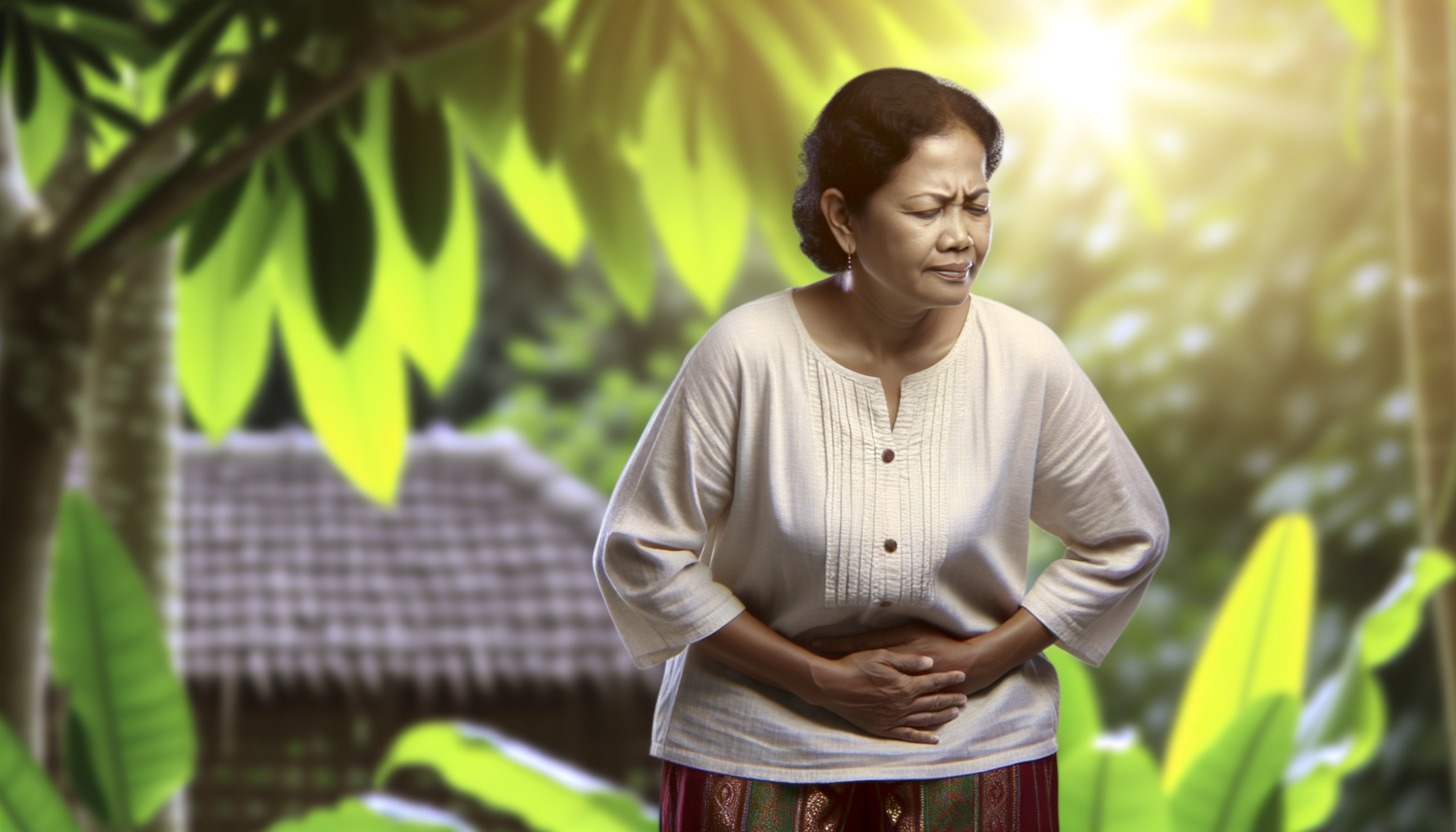Introduction to Vitamin D Deficiency and Lower Back Pain
Overview of lower back pain prevalence and impact
Lower back pain (LBP) is a pervasive ailment affecting individuals globally, with a significant number experiencing chronic lower back pain (CLBP). It is characterized by discomfort between the costal margins and the inferior gluteal folds, potentially extending to the legs or associated with sensory and motor deficits. The prevalence of nonspecific LBP, which lacks a definitive cause such as injury or infection, is notably high, accounting for approximately 80% of LBP cases in outpatient settings. This condition not only impairs quality of life and job performance but also imposes a substantial socio-economic burden due to its role as a leading cause of medical consultations and disability.
Connection between post-menopause and increased health risks
Post-menopause marks a phase in a woman’s life accompanied by a decline in estrogen levels, leading to increased health risks. This hormonal change is associated with a heightened susceptibility to various conditions, including osteoporosis, cardiovascular diseases, and metabolic disorders. The postmenopausal period is also linked to an elevated risk of lumbar disc degeneration, a condition that can contribute to the onset or exacerbation of lower back pain.
Highlighting the focus on vitamin D deficiency in postmenopausal women
Vitamin D deficiency is particularly prevalent among postmenopausal women, with studies indicating a deficiency rate ranging from 50% to 80%. This deficiency is concerning given vitamin D’s crucial role in bone health and muscle function. Insufficient levels of vitamin D can lead to alterations in bone turnover markers and exacerbate the risk of lumbar disc degeneration and subsequent lower back pain. Therefore, understanding the link between vitamin D deficiency and lower back pain in postmenopausal women is essential for developing effective prevention and treatment strategies.
Understanding Lumbar Disc Degeneration
The Anatomy and Function of Lumbar Discs
The lumbar spine, located in the lower back, consists of five vertebrae (L1-L5) that are interposed by intervertebral discs. These discs serve as shock absorbers and allow for flexibility and movement of the spine. Each disc is composed of a tough, fibrous outer layer called the annulus fibrosus and a soft, gel-like center known as the nucleus pulposus. The primary function of lumbar discs is to bear the weight of the upper body and distribute it evenly across the spine, while also providing a pivot point for motion.
Pathophysiology of Lumbar Disc Degeneration
Lumbar disc degeneration (LDD) is a condition characterized by the breakdown of the intervertebral discs in the lumbar spine. This degenerative process can lead to a loss of disc height and elasticity, resulting in reduced shock absorption and increased spinal stiffness. Factors contributing to LDD include age-related wear and tear, genetic predisposition, mechanical loading, and lifestyle choices such as smoking and obesity. As the discs degenerate, individuals may experience symptoms ranging from mild discomfort to severe pain, often referred to as lower back pain (LBP).
Role of Estrogen in Disc Health and the Effects of Menopause
Estrogen, a hormone prevalent in women, plays a significant role in maintaining disc health. It promotes the synthesis of collagen and proteoglycans, which are essential for the structural integrity and hydration of the disc. During menopause, estrogen levels decline, leading to a decrease in these critical components and an acceleration of disc degeneration. This hormonal change, coupled with the natural aging process, makes postmenopausal women particularly susceptible to LDD.
Recent research has highlighted the impact of vitamin D deficiency on lumbar disc health in postmenopausal women. Vitamin D is vital for calcium and phosphorus homeostasis, which is crucial for bone density and overall musculoskeletal strength. A deficiency in vitamin D has been linked to an increased risk of LDD and LBP. The study cited indicates that postmenopausal women with severe vitamin D deficiency.
In conclusion, understanding the anatomy and function of lumbar discs, the pathophysiology of LDD, and the role of estrogen and vitamin D in disc health is crucial for addressing the increased risk of lower back pain in postmenopausal women. As estrogen levels drop during menopause, the importance of monitoring and potentially supplementing vitamin D becomes more apparent to maintain lumbar disc integrity and function.
The Role of Vitamin D in Musculoskeletal Health
Biological Functions of Vitamin D
Vitamin D, often referred to as the “sunshine vitamin,” is a fat-soluble vitamin that plays a crucial role in maintaining musculoskeletal health. It is synthesized in the skin upon exposure to sunlight and can also be obtained through dietary sources and supplements. The primary biological function of vitamin D is to regulate the absorption of calcium and phosphorus in the gut, which are essential minerals for the development and maintenance of strong bones and teeth. Additionally, vitamin D modulates neuromuscular function and has anti-inflammatory properties, which are vital for overall musculoskeletal health.
Vitamin D Deficiency and Bone Diseases
Vitamin D deficiency can lead to a spectrum of bone diseases, with rickets in children and osteomalacia in adults being the most well-known. These conditions result from impaired bone mineralization, leading to softening and weakening of the bones. In postmenopausal women, vitamin D deficiency exacerbates the risk of osteoporosis, a disease characterized by reduced bone density and increased fracture risk. The deficiency of this vitamin impairs the body’s ability to maintain adequate levels of calcium and phosphorus in the blood, which are necessary for healthy bone remodeling and strength.
Vitamin D’s Impact on Muscle Strength and Pain Sensitivity
Recent research has highlighted the importance of vitamin D in muscle function. Adequate levels of vitamin D are associated with improved muscle strength and mass, which are critical for mobility and balance, reducing the risk of falls and fractures in the elderly. Furthermore, vitamin D has been shown to influence pain sensitivity. Deficiency in vitamin D may increase the perception of pain by affecting nerve growth factor and inflammatory cytokines, which are involved in pain signaling pathways. This is particularly relevant for postmenopausal women, who may experience increased lower back pain due to lumbar disc degeneration exacerbated by vitamin D deficiency. Supplementation with vitamin D has been observed to relieve pain and improve musculoskeletal strength in individuals with deficiency, underscoring the importance of maintaining adequate vitamin D levels for musculoskeletal health.
In conclusion, vitamin D plays a multifaceted role in the musculoskeletal system, influencing bone health, muscle function, and pain perception. Ensuring sufficient vitamin D levels through sun exposure, diet, and supplementation when necessary is essential for preventing bone diseases, maintaining muscle strength, and potentially alleviating pain associated with musculoskeletal conditions.
Do you know the three main ways that your body gets in touch with harmful chemicals with everyday products? Knowledge is Power!
The Ultimate Detox Guide will tell you how to lower your exposure to harmful chemicals!

Analyzing the Study on Vitamin D Deficiency and Back Pain
Study methodology and participant demographics
The study in question was a single-centered retrospective observational study conducted at a tertiary care teaching hospital. It spanned one year, from January 2019 to December 2019, focusing on patients presenting to the outpatient department with chronic low back pain (CLBP). Ethical permission was granted by the Institutional Review Board, ensuring adherence to ethical standards.
Participants included both sexes, aged 18–65, suffering from CLBP for 12 weeks or more, without radiculopathy. Exclusion criteria were comprehensive, ranging from disc herniations to metabolic bone diseases, ensuring a focus on nonspecific CLBP. Serum 25-OH-vitamin D levels were measured using the ELISA method, with more than 30 ng/mL considered normal. Patients were categorized into two groups based on their vitamin D levels: deficient (Group 1) and normal (Group 2). Demographics such as age, gender, marital status, education level, sun exposure, dietary preferences, and BMI were meticulously recorded.
Key findings linking vitamin D deficiency to lumbar disc degeneration
The study’s results were telling: out of 492 CLBP cases, 376 had nonspecific CLBP, with a significant majority (80.32%) being vitamin D deficient. The deficient group had a lower mean vitamin D level compared to the normal group, and this deficiency was statistically significant. Furthermore, the vitamin D deficient group reported higher pain severity on the Visual Analogue Scale (VAS), establishing a clear link between vitamin D deficiency and increased pain severity. A negative correlation was found between vitamin D levels and VAS scores, suggesting that lower vitamin D levels were associated with higher pain severity.
Additional risk factors identified
Aside from vitamin D deficiency, the study identified additional risk factors for CLBP. These included demographic characteristics such as gender, with females representing a higher percentage of the deficient group. Educational level also played a role, with the majority of patients educated only up to high school. BMI was another significant factor, with a large portion of patients falling into the overweight or obese category. Despite these additional factors, both groups were statistically similar in demographics, underscoring vitamin D deficiency as a critical variable in lumbar disc degeneration and associated pain.
In conclusion, the study provided robust evidence linking vitamin D deficiency to increased severity of lumbar disc degeneration and CLBP. It highlighted the importance of maintaining adequate vitamin D levels for musculoskeletal health, particularly in postmenopausal women who are at an increased risk for such deficiencies.
Implications of Vitamin D Deficiency in Postmenopausal Women
Severity of Disc Degeneration and Pain Correlation with Vitamin D Levels
Research has established a compelling link between vitamin D deficiency and the severity of lumbar disc degeneration in postmenopausal women. Vitamin D plays a crucial role in maintaining bone health, and its deficiency can lead to structural changes in the lumbar discs, which are critical components of the spinal column. These changes can manifest as increased pain and discomfort in the lower back. A study focusing on postmenopausal women with severe vitamin D deficiency—serum levels below 10 ng/mL—found that these women had lower average bone mineral density T-scores and experienced greater lower back pain compared to those with normal vitamin D levels. The correlation between severe vitamin D deficiency and higher grades of lumbar disc degeneration, particularly in the lumbosacral region, underscores the importance of maintaining adequate vitamin D levels for spinal health.
The Importance of Maintaining Adequate Vitamin D Levels
Maintaining adequate levels of vitamin D is essential for postmenopausal women, not only for bone health but also for mitigating the risk of lower back pain. Vitamin D’s role extends beyond calcium absorption and bone metabolism; it also influences nerve and muscle pain sensitivity, muscle strength and mass, and inflammation. These factors collectively contribute to the overall musculoskeletal health of individuals. As such, avoiding severe vitamin D deficiency is critical, and even though not all women may require supplementation, ensuring sufficient vitamin D intake is a key preventive measure against lumbar disc degeneration and associated pain.
Recommendations for Vitamin D Supplementation and Lifestyle Changes
- Supplementation: For postmenopausal women with severe vitamin D deficiency, supplementation may be necessary. Clinical trials are suggested to determine the efficacy of vitamin D supplementation in the prevention and treatment of disc degeneration and lower back pain.
- Diet: Incorporating vitamin D-rich foods such as fatty fish, fortified dairy products, and egg yolks can help improve serum vitamin D levels.
- Sun Exposure: Moderate sun exposure can naturally boost vitamin D levels. However, it is important to balance sun exposure with skin cancer risk.
- Physical Activity: Regular weight-bearing exercises can strengthen bones and muscles, potentially reducing the impact of vitamin D deficiency on lumbar disc health.
It is important for healthcare providers to assess vitamin D levels in postmenopausal women, especially those presenting with lower back pain, and to recommend appropriate interventions based on individual needs.
Preventive Measures and Treatment Options
Lifestyle Modifications to Prevent Lower Back Pain
Lower back pain can be a debilitating condition, particularly for postmenopausal women who may already be facing increased health risks. To prevent the onset or worsening of lower back pain, certain lifestyle modifications can be highly beneficial:
- Maintain a healthy weight: Excess body weight can put additional strain on the back muscles and spinal discs. Achieving and maintaining a healthy weight through a balanced diet can help alleviate this pressure.
- Regular physical activity: Engaging in exercises that strengthen the core muscles, including the abdominals and lower back, can provide better support for the spine. Activities such as walking, swimming, and yoga can improve flexibility and strength.
- Ergonomic adjustments: Proper posture and ergonomic workstations can reduce the risk of back strain. Chairs with good lumbar support and desks at the correct height can prevent slouching and promote a healthier spine alignment.
- Avoiding high-impact activities: High-impact exercises can exacerbate back pain. Opting for low-impact activities can help preserve back health without putting undue stress on the spine.
Non-pharmacological and Pharmacological Treatments
When lifestyle modifications are not enough to manage lower back pain, additional treatments may be considered:
- Physical therapy: A physical therapist can design a personalized exercise program to strengthen the muscles that support the back and improve mobility.
- Pharmacological options: Over-the-counter pain relievers, such as ibuprofen or acetaminophen, can be used for pain management. In more severe cases, prescription medications may be necessary under the guidance of a healthcare provider.
- Alternative therapies: Acupuncture, massage therapy, and chiropractic care are alternative treatments that some individuals find helpful for managing back pain.
Role of Nutrition and Exercise in Managing Post-Menopause Symptoms
Nutrition and exercise play a crucial role in managing symptoms associated with post-menopause:
- Calcium and vitamin D intake: Adequate levels of calcium and vitamin D are essential for bone health. Dairy products, leafy greens, and fortified foods can help meet calcium needs, while vitamin D can be obtained from sunlight exposure and dietary sources like fatty fish and fortified foods.
- Regular exercise: Weight-bearing and resistance exercises are particularly important for maintaining bone density and preventing osteoporosis.
- Hydration: Staying hydrated is important for overall health and can help maintain the elasticity of intervertebral discs.
- Limiting alcohol and caffeine: These substances can have a diuretic effect, potentially leading to dehydration and exacerbating back pain.
By incorporating these preventive measures and treatment options, postmenopausal women can better manage lower back pain and improve their overall quality of life.
Conclusion and Future Directions
Summarizing the Significance of the Study’s Findings
The research on post-menopause vitamin D deficiency and its link to lower back pain has provided valuable insights into the health challenges faced by postmenopausal women. The study’s findings underscore the importance of vitamin D in maintaining musculoskeletal health, particularly in the context of lumbar disc degeneration, which is a common source of lower back pain. The association between hypovitaminosis D and increased severity of back pain, as well as the difficulty in performing daily activities, highlights the potential impact of vitamin D levels on quality of life.
The Need for Further Research on Vitamin D and Musculoskeletal Health
While the study has shed light on the relationship between vitamin D deficiency and lower back pain in postmenopausal women, it also opens the door for further research. There is a need to explore the causal mechanisms underlying this association and to determine the efficacy of vitamin D supplementation in the prevention and management of back pain. Future studies should aim to establish optimal vitamin D levels for musculoskeletal health and to evaluate the long-term outcomes of maintaining these levels through diet, supplementation, and lifestyle modifications.
Final Thoughts on Managing Lower Back Pain in Postmenopausal Women
Managing lower back pain in postmenopausal women requires a multifaceted approach that includes ensuring adequate vitamin D levels. Healthcare providers should consider screening for vitamin D deficiency in this population and recommend appropriate interventions, such as vitamin D supplementation and exposure to sunlight. Additionally, incorporating strategies to improve muscle strength, flexibility, and overall physical fitness can help mitigate the risk factors associated with lower back pain. Ultimately, a combination of preventive measures, tailored treatments, and ongoing research will be crucial in addressing the musculoskeletal health challenges faced by postmenopausal women.











